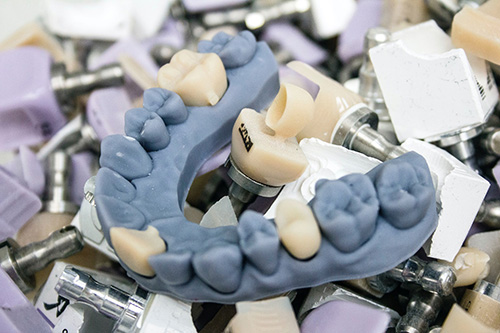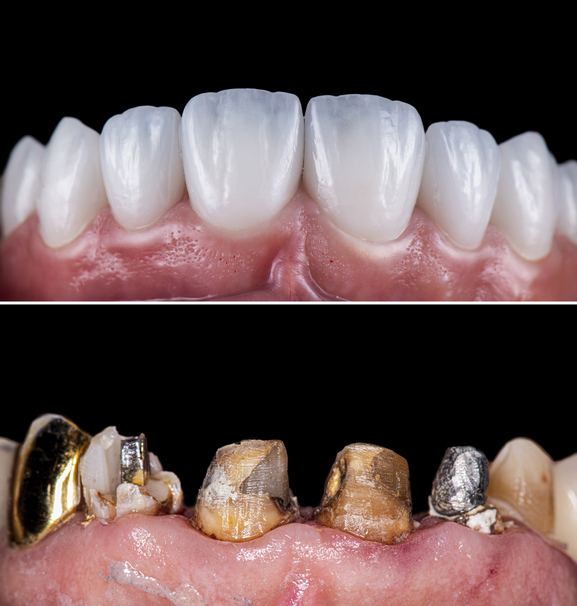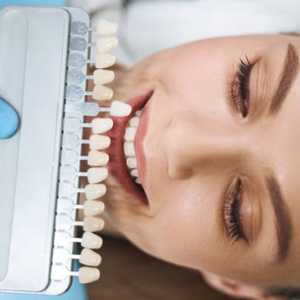what are Indications for Dental Crowns ?
Dental crowns may be recommended in various situations, such as:
- Severe decay that exceeds the capacity of a filling.
- Cracked or fractured teeth that require reinforcement.
- Post-root canal treatment, where the tooth needs additional protection due to increased vulnerability.
Support for a dental bridge or to cover a dental implant.
We utilize the state-of-the-art iTero scanner for all our dental services, ensuring precise, efficient, and comfortable scanning for optimal results.
Enquire now
What are the types of Dental Crowns
How long does a crown last on a tooth ?
Is getting dental crown painful ?
While the procedure itself will be completely painless, your tooth may be a little tender for a few days after your crown is placed.
Is it OK to leave a crown off a tooth ?
A tooth without a crown is vulnerable to bacterial infection and decay.
Can a badly broken tooth be crowned ?
Dental crowns are the ideal solution for repairing a broken or severely damaged tooth that can’t be restored with veneers, onlays, or fillings.
How bad can a tooth be and still be crowned ?
Crowns can be placed when up to ¾ of the natural tooth has been damaged or decayed, providing essential support and protection.
Dental crown and Bridge
What are dental bridges?
what are Indications for Dental Bridges
You may need a dental bridge if you are experiencing:
- Loss of one or more teeth, which can negatively affect your smile and oral health.
- Difficulty chewing or speaking due to gaps in your dentition.
- Changes in facial shape resulting from tooth loss.
Shifts in bite alignment that may occur if gaps are left unaddressed.
How long does a dental bridge last ?
The average lifespan of a bridge and its crowns is about 5 to 15 years
What are types of Dental Bridges
There are several types of dental bridges, including:
- There are several types of dental bridges, each offering specific benefits depending on your needs and the condition of your teeth. These include:
- Traditional Dental BridgeThis is the most common type, consisting of crowns placed on either side of the gap, with pontics filling the space in between. It is suitable when healthy teeth are present on both sides of the gap, providing both stability and function.
- Cantilever Dental Bridge
Similar to a traditional bridge, but supported by a crown on only one side. This option is ideal when there are adjacent teeth on just one side of the gap, providing a solution for smaller gaps. - Maryland Dental Bridge
Also known as a resin-bonded bridge, this type utilizes metal wings bonded to the backs of adjacent teeth for support. Typically used for front teeth, it offers a minimally invasive solution that preserves more natural tooth structure. - Implant-Supported Bridge
Instead of relying on natural teeth for support, this type utilizes dental implants as anchors. This option is ideal for replacing several consecutive missing teeth, and it requires a healing period for the implants to integrate with the jawbone, ensuring long-term durability and stability.Each of these bridge options is designed to restore the functionality and aesthetics of your smile, with the choice depending on the number of missing teeth, the condition of adjacent teeth, and personal preferences.
Dental Inlays and Onlays
what is the difference between inlay and onlay ?
Inlays and onlays, also referred to as indirect fillings, are restorative options for teeth that have suffered significant decay or damage. They provide a durable and aesthetically pleasing solution while being less invasive than full crowns.
What are the indications for Inlays and Onlays ?
These restorations are typically used on posterior teeth and serve to reinforce the tooth’s structure, providing strength and longevity. Inlays fit within the central area of the tooth, while onlays cover one or more cusps.
What are benefits of Inlays and Onlays ?
- Minimal tooth reduction compared to crowns.
- Can last up to 30 years with proper care.
- Restore tooth structure and functionality effectively.
What does a tooth inlay look like ?
An inlay is a small filling that fits into the biting surface of a tooth.
Can I brush my teeth after inlay ?
once the swelling subsides, the patient should return to normal habits of brushing and flossing regularly.


















